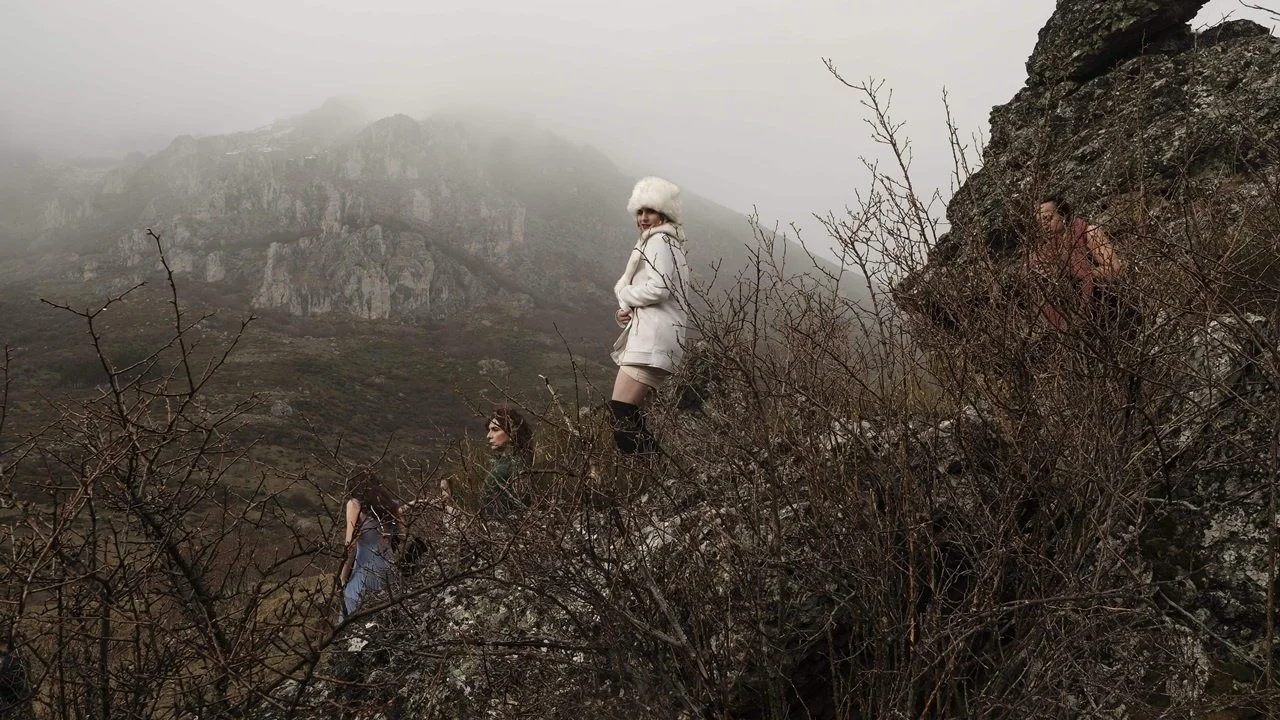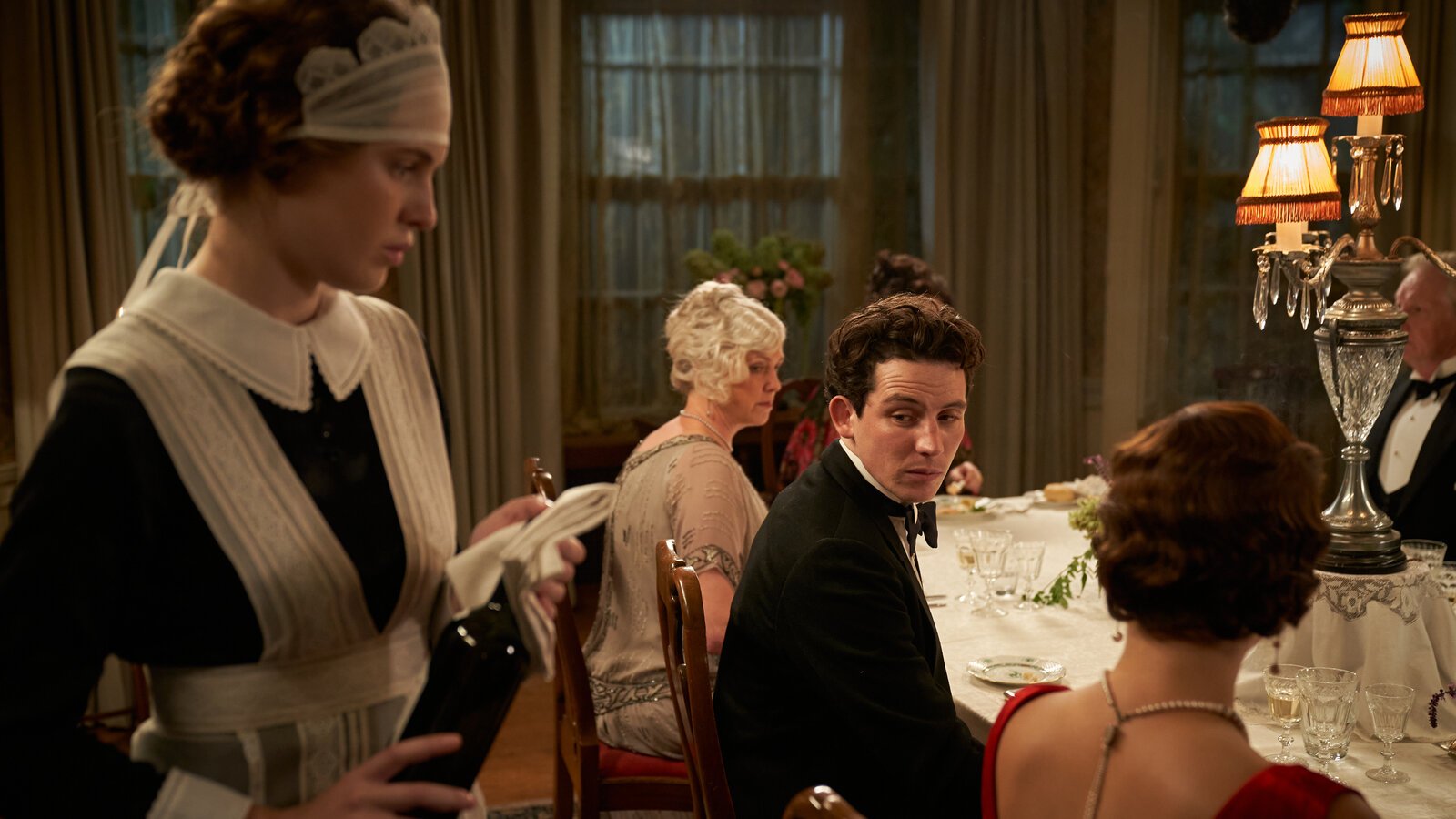Directing: B-
Acting: B
Writing: C+
Cinematography: C-
Editing: C-
“I think I’m going crazy,” says Tilda Swinton’s character, Jessica, in the middle of Memoria, and I felt like she’d read my mind. It was a subtle moment of realization, as literally everything in this movie is so subtle that, until the very end, it’s as though literally nothing is happening, which means this moment was also one of the most exciting things to happen during it. Given what happens at the end, which I guess I won’t spoil even though it hardly matters for multiple reasons (I’ll get to that), I suppose it qualifies as the second-most exciting thing to happen in the movie. I can’t say that reflects on it all that positively.
I’m sure the writer and director, Apichatpong Weerasethakul, a Thai filmmaker directing a British star in a movie set in Colombia, did not have any intention for Jessica to have read my mind the way he did. Jessica thinks she’s going crazy because she keeps hearing a deep, resonant, metallic thud that sounds like it’s coming from “the core of the Earth,” and no one else can hear it. I think I’m going crazy because I sat through that whole movie wondering how the hell it garnered universal critical acclaim. I’m talking a score of 91 on Metacritic, where the “worst” review still got assigned a score of 70. At least the average user score there was a little more mixed, at 6.9, which—and this is rare—did make me feel better. At least I knew I wasn’t the only one baffled by this movie.
I took a look over at Rotten Tomatoes. “88% Fresh,” which in that case means 88% of reviewers liked it. Unlike MetaCritic, they don’t gauage how much they liked it, only that they liked it. It does also mean, though, that 12% of reviewers didn’t like it. Kurt Loder calls it “Virtually a parody of an awful art house movie.” Whew! I am not alone!
I debated whether to review this movie at all myself, actually. Why bother, if I am not going to recommend it to anyone? Plus, Weerasethakul is taking a compelling approach to this film’s release, which honestly is the most interesting thing about it: it’s only being released one city at a time, one scren at a time, so that at any given moment of it playing, it has only one single audience. It happens to be playing in Seattle this week, at the Egyptian Theater. It appears it will still be there next week. But, there is no plan to release it later in any way for home viewing. I don’t care. Don’t go see it. In the meantime, I still want to complain about it.
More specifically, and this is a new move for me, I want to respond to some of the many good things critics are saying about Memoria. Consider Mike D’Angelo, in his review for The AV Club, in which he writes, in part:
There’s something uniquely intense about hearing an entire audience remain utterly still during a movie’s transporting final minutes, afraid to cough or squeak their seat’s rusty springs or even breathe too loud, for fear of breaking the spell. Memoria inspires that kind of rapture.
The thing is, that for the most part quite accurately described my theatrical experience as well. Memoria is quite intentional in its deeply measured, literal quietness. In fact, it is preceded by a ten-minute “silent pre-show,” a slide show of sorts, of location photos intermittently overlaid with what look like doodle versions of concept art in white lines. The opening title cards of this "pre-show” indicate it to be a way for us to “transition” into the tone of the film itself, and then read, Enjoy our silence. I have to admit: the rather slow slide show proved to be effectively hypnotic—on the whole theater. It wasn’t quite as effective at holding that feeling of hypnosis through the entire film itself, at least for me. One guy got up about three quarters of the way through the film, and I wondered if he was just going to the bathroom or if he’d had enough of this movie in which almost nothing happens. Just because he was leaving, for whatever reason, I envied him. I wonder if I was truly somehow the only person in the theater who, in the last act, suddenly thought to myself, Oh my god, I am SO BORED.
Here’s Caroline Tsai from The Playlist, reviewing from its screening at Cannes:
A master of slow cinema, Weerasethakul takes his time with every shot; long stretches of time pass without any dialogue or movement. In so doing, the film inculcates a kind of hypersensitivity in its viewers, who become suddenly attuned to each flitting blade of grass or buzzing fly that enters the shot—as well as to their own posture and breathing.
Again: I can’t argue with any of that. What I don’t get is the idea that this is somehow a great cinema experience. The cinematography is one of my greatest criticisms of Memoria, actually, because those long shots are done with the camera usually stationery, or in rare cases, moving so slowly as to be barely perceptible. Literally, I would have enjoyed Memoria far more if the only change were that the camera moved at all.
Granted, that does give it a certain horror-tinged element, because more than once a scene occurs where that thud sound comes out of nowhere, breaking a long silence—as happens in the very opening scene—and I was so startled I jumped out of my chair. This means that in other scenes, the camera holding a stationery shot for what seems like an eternity, I was terrified of something suddenly scaring the shit out of me again. This happens late in the film with the camera pointing at a man evidently able to die temporarily, lying on his back in grass, his mouth slightly open, his eyes open and blank, for all intents and purposes a corpse. If any image from this movie haunts me, it will be that one.
Apparently, however, I am one of the few people who just doesn’t get it. I feel like something everyone else seems to understand is going over my head. It felt a lot like a truly terrible documentary I saw at the Seattle International Film Festival about seventeen years ago, in which the audience came fully expecting it to be great, so they responded as though it met those expectations, even though it hadn’t. To be fair, Memoria is still a decidedly better film than that one was, but that doesn’t mean Memoria is without its own frustrating pretentions.
And I found Memoria to be deeply frustrating. I was even fully on board, until maybe two thirds or so of the way into it. I’d be a lot happier with this movie if what was supposed to be going on actually came together in the end in a more coherent way. Instead, as Jessica seems to be getting closer to answers regarding this mysterious thud sounds she keeps hearing at very erratic intervals (it’s usually once in a given day, or between long periods; then, during a dinner scene with her sister’s family, she hears it several times during a single conversation—and I struggled to glean whether it was related to the conversational topic at hand, about a secluded society that does not want to be touched by modern people or inventions; I think maybe it was), I found it only got more confusing. If it’s getting harder, rather than easier, for me to figure out what the hell is going on while a movie is moving toward wrapping up, I struggle to call that a success.
Still, I feel like I kind of get what Apichatpong is going for, which is a deeply immersive, sensory experience. By that measure, Memoria succeeds with flying colors. When it comes to the connection he seems to be making between sound and memory (hence the title, presumably), what passes for a plot here really lacks clarity. It felt to me like Apichatpong elevates the importance of the immersive experience over a story, which is what most of us go to the movies for, however innovatively it might be told. I would argue the two are of equal importance, and as such, when the movie finally ended, I felt relief more than anything.










